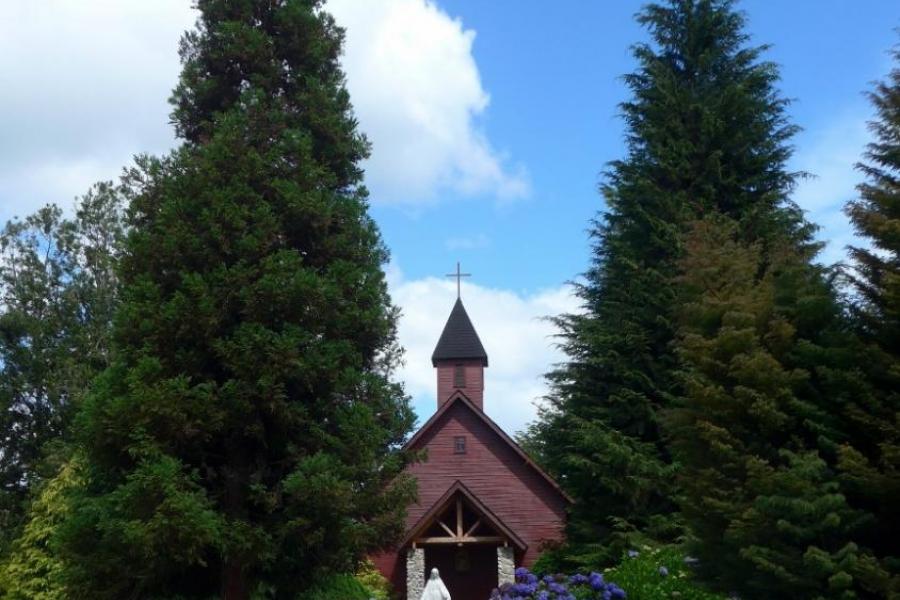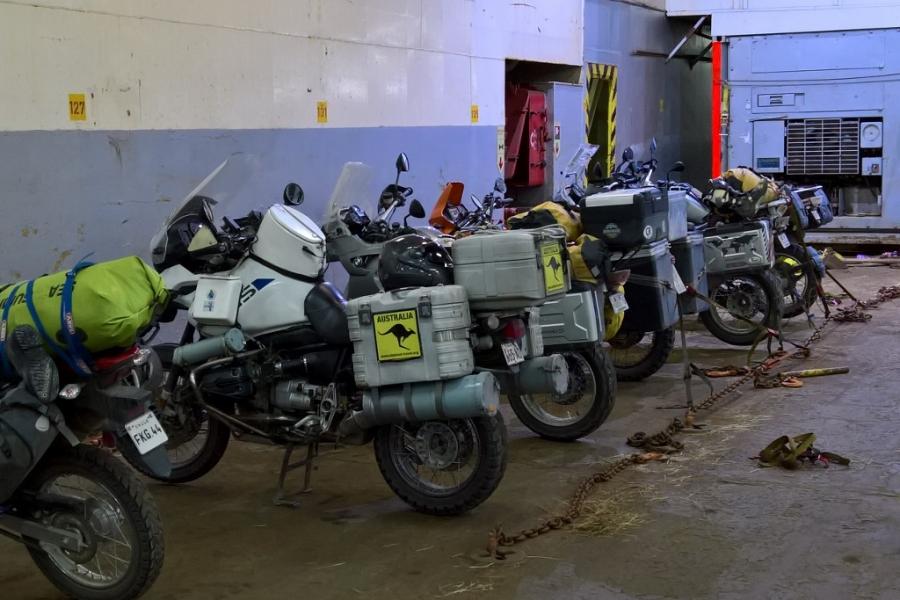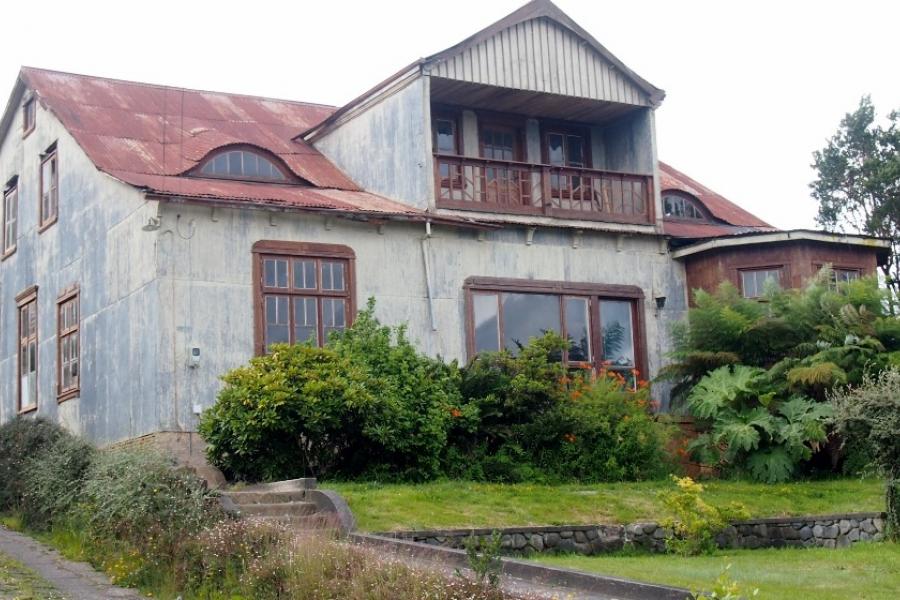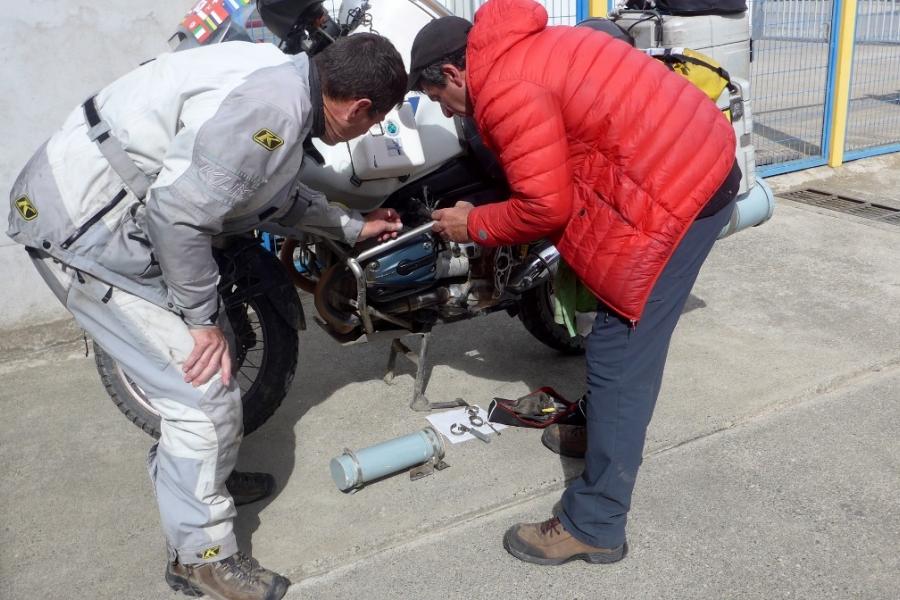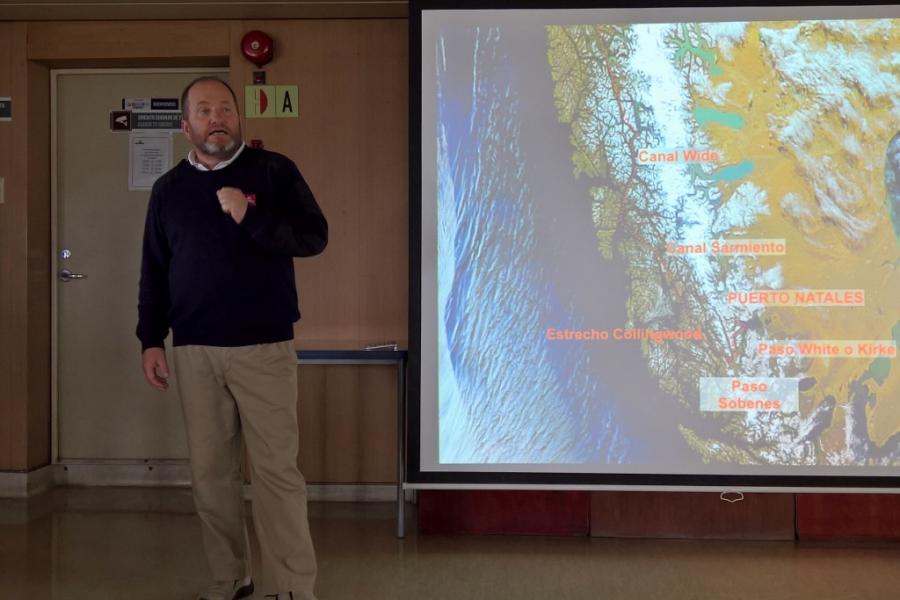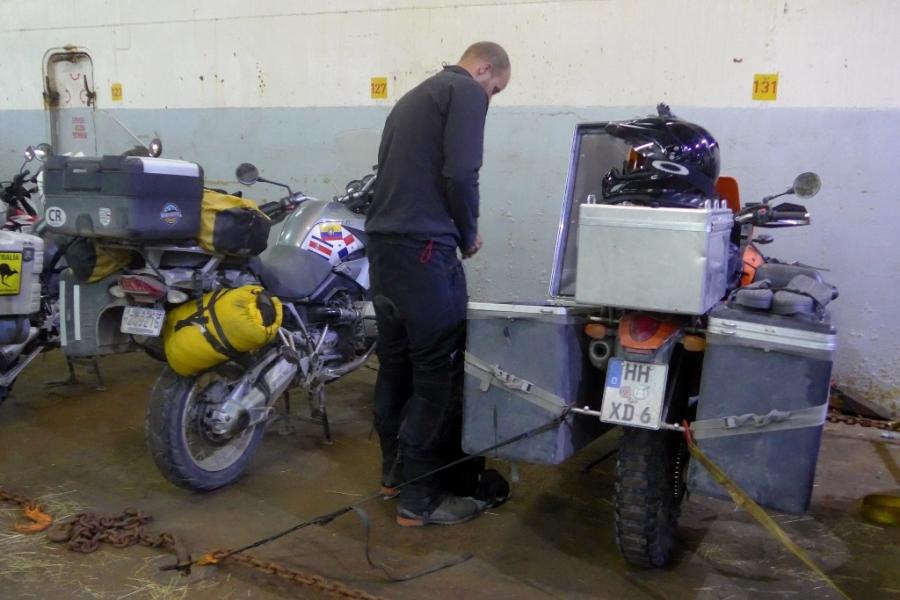The Best of Friends (Originally posted 8 Jan 2017)
Country
In the course of a few weeks we have crossed into and out of Argentina and Chile several times as we negotiated the tortured geography and national boundaries of Tierra del Fuego. At one point we crossed into Chile only to cross out again a little more than an hour later. It would be easy to think that these two countries, sharing the longest land border, would be well coordinated and that the borders would be beyond controversy. After all, the countries have a long common history.
The great hero of Chilean independence, Bernardo O'Higgins, was born in the southern town of Chillán and led the uprising in 1814. After a resounding defeat by the Spanish at Rancagua, O'Higgins withdrew the remnants of his army across the Andes to Argentina and threw his lot in with the Argentinian liberator San Martín. Together they recrossed the Andes and defeated the Spanish at Chacabuco in 1817. O'Higgins became the leader of an independent Chile. It would be a mistake, however, to think that this early cooperation against the Spanish would continue into nationhood. The disputes between Chile and its neighbours had begun even as the battles for independence were being fought.
It was not until 1881 that the first treaty agreeing general demarcation of the border between Argentina and Chile was forged. The watershed of the Andes was agreed as the boundary but this was problematic in Patagonia. In the intervening years (1864-66) the Chileans fought a short naval war against Spain which was keen to re-establish itself in South America. The Argentinians were hardly neutral in this and provided bunkering for the Spanish fleet. Again in 1891, when Chile was in dispute with the US after the stabbing death of two US sailors, Argentina offered to allow the US to use its Salta province to launch an attack on its neighbour. The Chileans returned the favour by supporting the United Kingdom in its war with Argentina over the Falkland Islands (Islas Malvinas). These and many other slights are not easily forgotten. The dispute over territory has continued into the current century over ownership of three small islands in the Beagle Channel which affect the claim by Argentina in Antarctica. In 1978, war over these insignificant rocks was only avoided when the Pope offered to mediate and the matter is still not resolved.
As travellers we “don't mention the war” (any war) and keep our opinions to ourselves even when we are standing in a freezing wind tunnel at the Chilean border having every bag searched for contraband fruit or cheese. Off the bike and with our electrically heated jackets unplugged, the Tierra del Fuego wind was vicious to the last. We were considerably more comfortable back on the bike with the heating turned up as we rode the gravel around the exposed western coast of the Great Island to the tiny village of Porvenir. This was to be the start of our long journey north through Chile.
On this first short leg, a stone thrown up by a passing car smashed a hole straight through one of the extra storage tubes slung under Elephant's panniers. These iconic “rocket tubes” have been on the bike for 10 years and had been hastily assembled in a cheap hotel room in Barcelona. They had given excellent service for something made from short lengths of 150 mm sewer pipe so there is probably no reason for complaint, but it still cost us two days of improvisation to get the tube watertight again and this left us in a ghost town for New Year's Eve.
New Year's Eve has always been a special and very personal celebration for us. It was at a New Year's Eve party 43 years ago that I first met Jo and introduced her to the Suzuki 750 GT (Waterbus) that I had at the time. In celebration of that fateful night we enjoyed a quiet meal at the best (in our opinion) restaurant in Porvenir and considered the life that had brought us there to the end of the world but still on a motorcycle. There was, it seemed, plenty to be thankful for not least the good health that allows us to keep travelling.
Not that either of us was well disposed towards Elephant at the time. Apart from the luggage problem, a worn O ring in the oil filler tube was leaking engine oil and the slipstream had blown it back coating everything on the left side of the bike, including us, with a paste of oil and dust. We had, of course, run out of spares for the O ring which is a common fault with this bike.
With the luggage tube fixed we finally took the ferry across the Magellan Strait to Chile's southernmost city, Punta Arenas. Here we contacted Alejandro at Moto Adventures Chile and, although it was a public holiday, he opened his workshop and magically produced an O ring that was close enough to the correct size to keep the engine oil in the engine; always a good thing. It took only a few minutes to make the repair but cleaning up the mess will take a little longer. This was, however, far from the last of Elephant's problems. The motor was, and still is, running rough because of a failing coil on one of the four spark plugs. Once again this is a common fault and this time we have the spares remaining in our useful box. All we need is a clear day in a dry, clean place to do the repair!
Three hours after leaving Alejandro we had made an oil-free ride north across a freezing rain-swept plain to a rendezvous with the ferry Evangelistas in the small city of Puerto Natales. Evangelistas is a 40 year old, stern-loading ferry built in Japan and it was to be our transport north through the Chilean Fjords of southern Patagonia. She was no cruise ship. Accommodation, facilities and food were basic. Heat was hard to find on board and, as if to curse us, she was a dry ship. She did, however, have two features which were worth the fare. The first was a safe berth for Elephant, something no cruise ship could offer. The second was the two naturalists who were part of the crew.
As we steamed north through the Earth's longest fjords for three days and four nights we were treated to thoughtful presentations on the geology, flora, fauna, history, culture and modern eco-politics of this stunning place. All of which, brings me to the fjords themselves. Here I am simply at a loss for the language to describe even a small part of it. The place makes you feel small. Were you ashore, you could walk nowhere. It would be pointless for it has no end. Every view is “breathtaking”. After a day you become numb. You run out of superlatives and start to realise that this is the world's wettest place and that incessant cloud and rain is normal and depressing. You just look on. You take fewer and fewer photographs. You get used to it but it is always there, beyond every porthole, brooding, unconquered, laughing at our little boat, a last great untamed wilderness.
Being the worst sailors ever, Jo and I survived a 16 hour open sea passage by taking the drugs and retiring to our cramped bunks. We missed a meal and a lecture on geology but rejoined the crew and passengers for the final run into Puerto Montt, an easy unload and a quick escape through this small crowded city. Beyond Puerto Montt, the Lakes District of Patagonian Chile spread out in a network of good secondary roads across a fertile and bucolic countryside. It was good to ride the curves around the lakes, take an early stop at a hospedaje with a real double bed and to walk a few kilometres to get our legs working.
This area of Chile was settled in the middle of the 19th Century when the Chilean government was desperate to populate Patagonia. The English and Dutch navies were competing for dominance of Tierra del Fuego and the Magellan Strait. Control of the Strait would have allowed the European powers to tax shipping at a time when communications between the east and west coast of the USA was by sea around the bottom of South America. The Chilean government offered land and citizenship and by 1851 the first of thousands of Germans arrived to clear the forests and till the fertile volcanic soil.
These early years, we were told, very tough. But looking at the land with our antipodean eyes we were struck by how lucky they were. Here was easy rolling country, deep fertile soil and ample rain. The European farming practices they brought were appropriate and successful and the newcomers prospered. Jo pointed out the obvious as we enjoyed the view over one of the famed lakes. Those who had made the journey to our own home in that other south land had faced a landscape so alien it may as well have been on another planet. Their European husbandry destroyed shallow soils and their clearing of vegetation created a dust bowl during the regular droughts. Some folks have all the luck.
The Chilean Germans have left their mark and many towns wear their heritage with considerable and justified pride. Excellent kuchen are available everywhere and the unique Chilean take on traditional German buildings is a delight. The well ordered farms rolling out across the hills have a distinctly European feel and were refreshing after six weeks of pampas, steppes and barren mountains. It was not, however, all good. The quality of the coffee has taken a turn for the worst and I fear they also needed a few of the Argentinian Italians.
We ended our week in the southern city of Osorno where we are spending the weekend waiting for a bike shop that stocks BMW parts to open on Monday. We are also watching it rain and waiting for a clear warm day after an eternity of foul weather. With luck, the weather will change tomorrow, the dealer will stock the parts we need and we will be wandering off to discover other Chilean stories before our Monday is done. If not, well, we will figure that out when we must.


